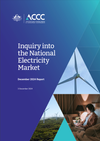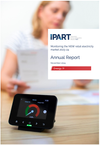Smart Meters are coming
The Australian Energy Market Commission (AEMC) is officially starting its Accelerating Smart Meter Deployment (ASMD) reforms. If you don’t already have a smart meter, you will by the end of 2030.
Everything you need to know about electricity tariffs


Bill Hero subscriber Peter Nink is one of many energy consumers blindsided by a forced change to a demand tariff.

Energy consumers get no rewards for staying loyal to their retailers. Over 80% of energy consumers are paying too much.

NSW regulator IPART’s 2024 Annual Report finds that customers on demand tariffs face annual bills $200 to $300 higher than flat-rate or time-of-use plans

A long overdue reset to the tariff reform agenda promises better outcomes for energy consumers. Plus a new report finds that retailers really do charge residential customers more than business.

Bill Hero is in the news about the rise of Demand Tariffs, but this story misses the main point that we're the *only* service that can calculate a comparison on a Demand Tariff bill

The AEMC wants to accelerate a universal smart meter rollout, targeting completion of a universal smart meter deployment by 2030.

Energy Made Easy and Vic Energy Compare cannot calculate a Demand tariff comparison, so these services are next to useless for energy consumers on Demand tariff plans.

Pre-cool your home overnight before a hot day, and you can save energy and wear & tear on your air conditioning system

Time of Use tariff means different prices will apply for your energy consumption at different times of the day

Single rate is the simplest electricity tariff, and is still the most common tariff used across Australia.

Climate Saver is a legacy tariff that was available to households in the Powercor distribution network in Victoria.

Demand tariffs are a new form of tariff intended to reward energy consumers who avoid contributing to peak network loads, and penalise that do. Here's everything you need to know
Savings as a Service is the blog site and newsletter from Bill Hero. Subscribe now and get your energy savings tips and information delivered fresh to your inbox every month.